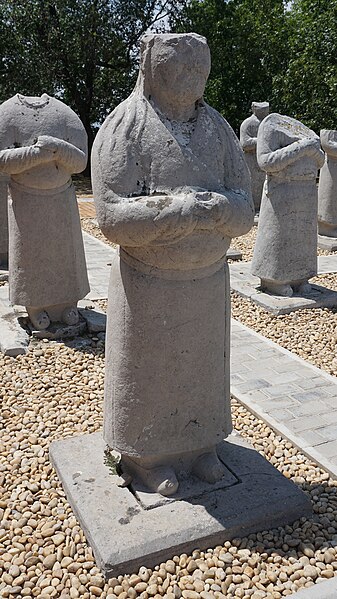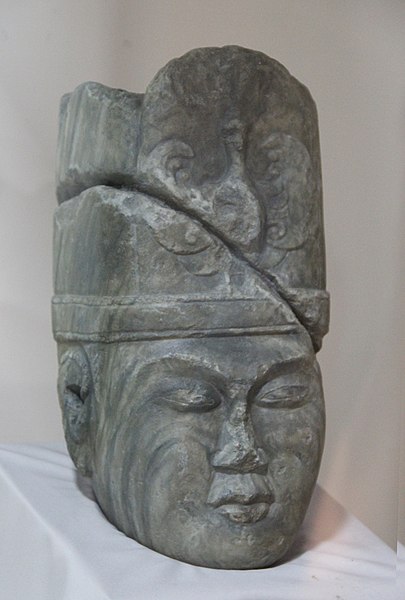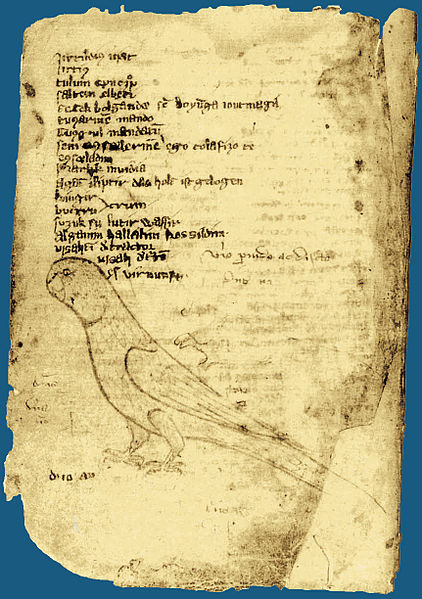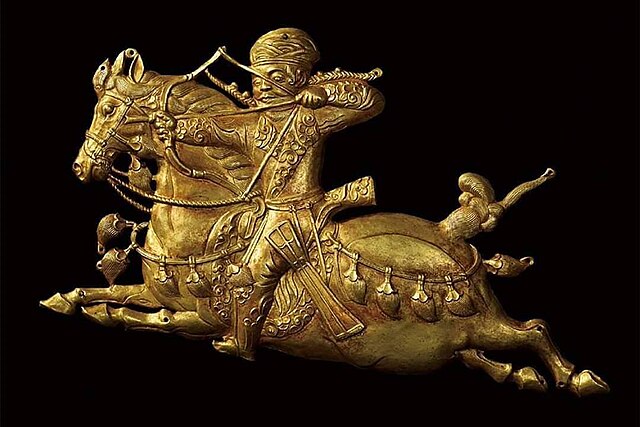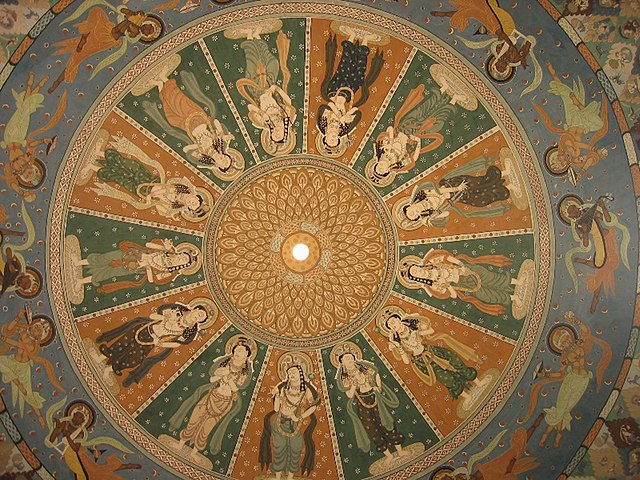The Western Turkic Khaganate or Onoq Khaganate was a Turkic khaganate in Eurasia, formed as a result of the wars in the beginning of the 7th century after the split of the First Turkic Khaganate, into a western and an eastern Khaganate.
Western Turk officers, one of them labeled as coming from Argi (Karashahr in modern Xinjiang), attending the reception of ambassadors by king Varkhuman of Samarkand. Afrasiab murals, 7th century CE. The Turks had a Mongoloid appearance.
An early Turk Shahi ruler named Sri Ranasrikari "The Lord who brings excellence through war" (Brahmi script). In this realistic portrait, he wears the Turkic double-lapel caftan. Late 7th to early 8th century CE.
Front, with double-parked tunic
Back, with long braids
The Turkic peoples are a collection of diverse ethnic groups of West, Central, East, and North Asia as well as parts of Europe, who speak Turkic languages.
Bust of Kul Tigin (AD 684–731), prince of the Second Turkic Khaganate, found in Khashaat, Arkhangai Province, Orkhon River valley. National Museum of Mongolia.
A page from "Codex Kumanicus". The Codex was designed in order to help Catholic missionaries communicate with the Kumans.
A Turkic warrior from the Göktürk period. The horse's tail is knotted in Turkic style. His hair is long, braided and his big-collared caftan and boots are Turkic clothing features.
Uyghur painting from the Bezeklik murals



